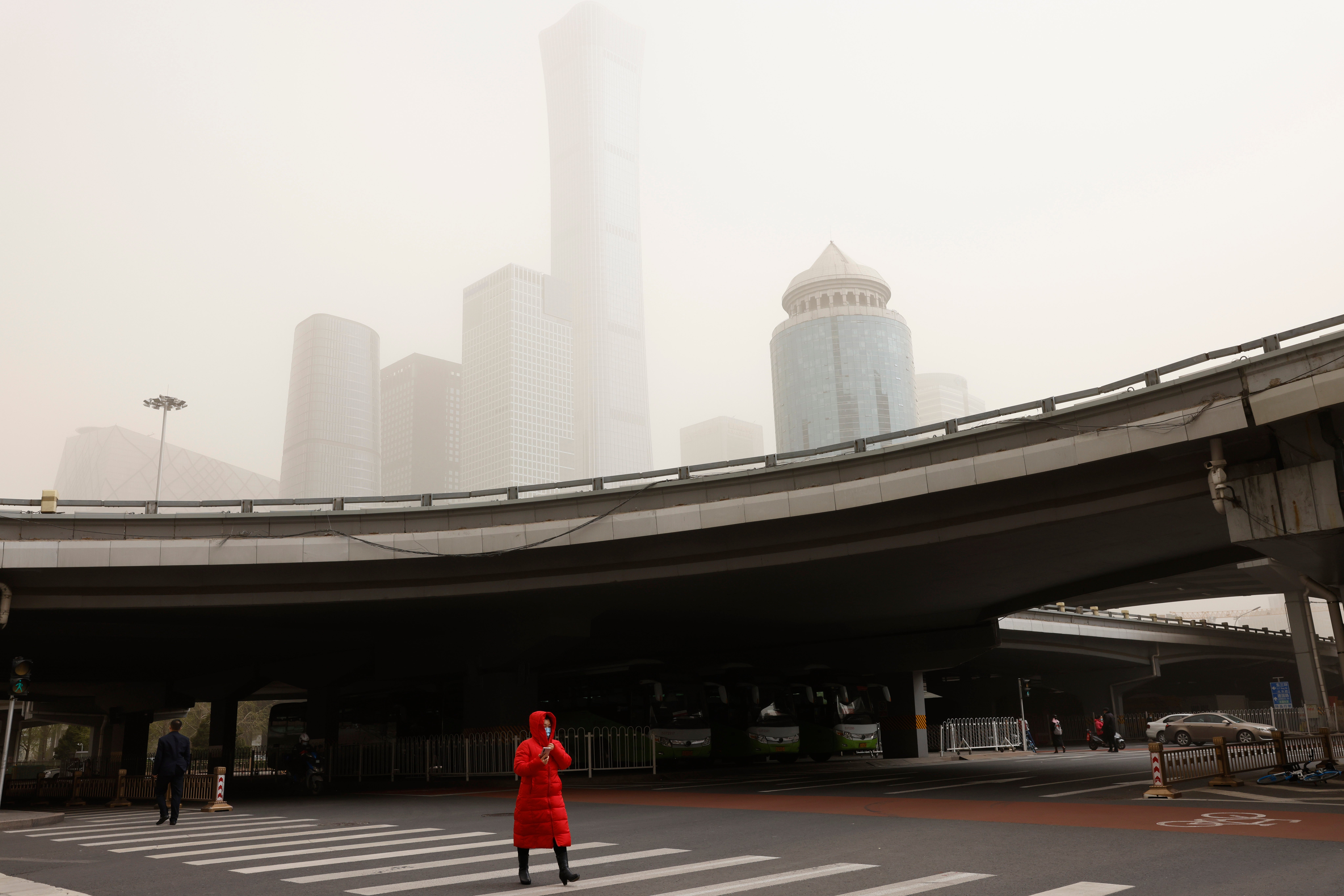Beijing enveloped in hazardous sandstorm for second time in two weeks
The meteorological office said the recent sandstorms to hit Beijing originated from Mongolia

Your support helps us to tell the story
From reproductive rights to climate change to Big Tech, The Independent is on the ground when the story is developing. Whether it's investigating the financials of Elon Musk's pro-Trump PAC or producing our latest documentary, 'The A Word', which shines a light on the American women fighting for reproductive rights, we know how important it is to parse out the facts from the messaging.
At such a critical moment in US history, we need reporters on the ground. Your donation allows us to keep sending journalists to speak to both sides of the story.
The Independent is trusted by Americans across the entire political spectrum. And unlike many other quality news outlets, we choose not to lock Americans out of our reporting and analysis with paywalls. We believe quality journalism should be available to everyone, paid for by those who can afford it.
Your support makes all the difference.The Chinese capital of Beijing woke on Sunday morning shrouded in thick dust carrying extremely high levels of hazardous particles, as the second sandstorm in two weeks hit the city due to winds from drought-hit Mongolia and northwestern China.
Visibility in the city was reduced, with the tops of some skyscrapers obscured by the sandstorm, and pedestrians were forced to cover their eyes as gusts of dust swept through the streets.
“It’s quite serious today. There’s always a day or two like this (of pollution or dust) each month,” said Mr Fan, 39, resident of Beijing, who did not wish to disclose his full name.
Beijing‘s official air quality index reached a maximum level of 500 on Sunday morning, with floating particles known as PM10 surpassing 2,000 micrograms per cubic metre in some districts.
Readings of smaller PM2.5 particles were above 300 micrograms per cubic metre, far higher than China’s standard of 35 micrograms.
Read more:
PM2.5 particles are especially harmful because they are very tiny and can enter the bloodstream, while PM10 is a larger particle that can enter the lungs.
The China Meteorological Administration issued a yellow alert on Friday, warning that a sandstorm was spreading from Mongolia into northern Chinese provinces including Inner Mongolia, Shanxi, Liaoning and Hebei, which surrounds Beijing.
The meteorological office said the recent sandstorms to hit Beijing originated from Mongolia, where relatively warmer temperature this spring and reduced rain resulted in larger areas of bare earth, creating favourable conditions for sandstorms.
Beijing might face more sandstorms in April due to the unfavourable weather this year, the meteorological office said.
Article courtesy of Reuters.
Join our commenting forum
Join thought-provoking conversations, follow other Independent readers and see their replies
Comments